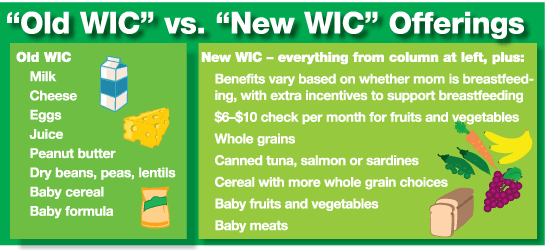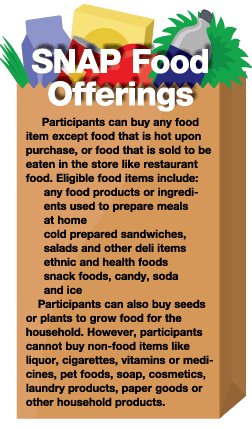BY NATALIE DIGATE MUTH, M.D., M.P.H., R.D.
As obesity has continued to take its toll on Americans of all ages, advocates and policy makers have debated many strategies to deal with the epidemic, including taxation on calorie-dense and nutrient-poor foods, food prohibitions, regulation of food marketing, implementation of school wellness policies, and nutrition content disclosures.
While these efforts may slowly chip away at the excesses and ingrained unhealthy behaviors of most Americans, last October’s long-anticipated upgrade to the Special Supplemental Nutrition Program for Women, Infants and Children (WIC) could significantly improve the way many Americans eat.
The WIC program provides low-income pregnant, postpartum and breastfeeding women, and children up to the age of five nutritious foods, nutrition education, and breastfeeding promotion and support. Women and children who make less than 185 percent of the federal poverty level (currently $40,793 for a family of four), meet a residency requirement, and are determined to be at “nutrition risk” (e.g., underweight, anemic, overweight, inappropriate nutrition practices) by a health professional are eligible for the program (FNS, 2009a). In 2009, the program served more than 9 million women and children.
The original WIC package provided funds for mostly high-fat dairy products such as cheese and milk, and few vegetables like starchy potatoes and carrots. For years, advocates argued that the WIC foods were out of line with the U.S. government’s Dietary Guidelines, and did little to promote healthy eating in the nation’s arguably most vulnerable population. Finally, nearly 30 years after the program started, changes were enacted and participants finally were offered an eating plan in line with the Dietary Guidelines for Americans and MyPyramid (see sidebar for a comparison of the “Old WIC” and “New WIC” food offerings). It is still too early to know if these changes have led to improved nutrition and the overall health of participants, but now at least the government-funded foods form the backbone of the government-promoted healthy eating plan. This is not currently the case with the other large-scale supplemental food program, the Supplemental Nutrition Assistance Program (SNAP), formerly called the food stamp program.

The economic crisis of the past 18 months has had a major impact on government-subsidized food programs, especially the SNAP program, which has grown by 7 million people over the past two years. Currently one in eight adults and nearly one in four children rely on the program (FNS, 2009b). While one might expect that recipients use the money—which amounts to about $275 per household or $125 per person per month—on wholesome, nutrient-rich staples, currently the SNAP program places few restrictions on qualified food purchases. (see “SNAP Food Offerings”).

While the SNAP program offers a limited number of state-specific incentives for healthy eating and in some locations provides nutrition education programs, it hardly compares to the new WIC program in ensuring that recipients spend the funds on healthy foods.
The recent explosion in participation of the SNAP program and the successful roll-out of the healthier WIC program offers the U.S. a unique opportunity to provide healthy, wholesome foods to many of the most nutritionally at-risk Americans. And despite its expanded offerings of healthy foods, the new WIC is cost-neutral compared to the old program (FNS, 2009a), demonstrating that it is possible to eat healthfully on a tight budget. The quiet upgrade of the WIC program rolled out smoothly with little backlash, political bantering or hype. If the same tactic applied to upgrading all of the government-funded food programs, perhaps a healthy eating plan would be an affordable reality for most Americans.
_____________________________________________________________________

NATALIE DIGATE MUTH, M.D., M.P.H., R.D., is a pediatrics resident at UCLA Mattel Children’s Hospital in the Community Health and Advocacy Track, a registered dietitian and spokesperson for the American Council on Exercise.